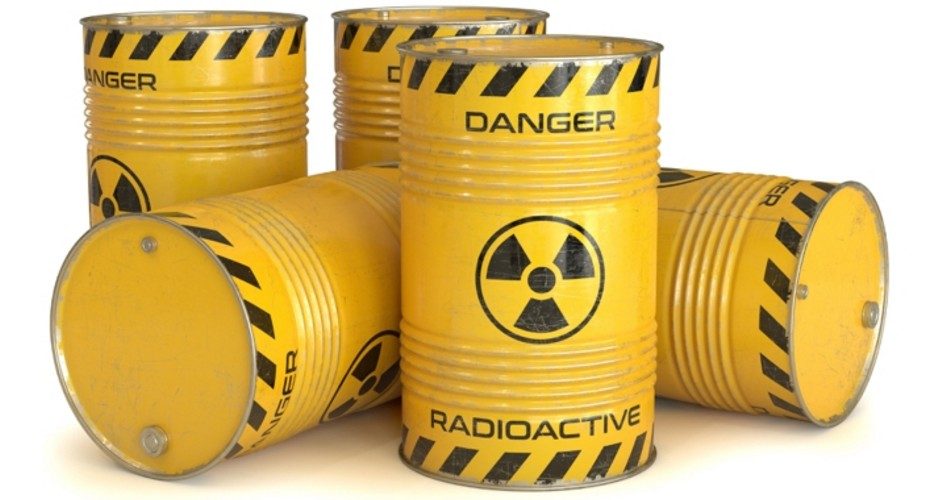
One supposed difficulty terrorists have effecting dirty-bomb mayhem is obtaining the radioactive material — but it turns out that this may not be so difficult after all.
For that material is as close as your local hospital.
At issue is radioactive cesium-137, which is “commonly found across the United States,” reports the Los Angeles Times. “Hospitals, blood banks and medical research centers use it in devices called irradiators, which sterilize blood and tissue.”
The cesium used is a dry, talc-like substance that remains radioactive for three centuries and could easily be dispersed via dirty bomb detonation. Just four teaspoons of it, experts say, could contaminate 6,400 acres of Manhattan, rendering it uninhabitable for months or even years.
Moreover, a federally commissioned study by the National Academies of Sciences (NAS) warned in 2008 that the “several thousand devices containing high-activity radiation sources” in the United States do present opportunities for terrorists to create dirty bombs. The NAS’s experts rated cesium their main concern, in fact. Yet to this day not only has no remedial action been taken — the problem has actually gotten worse.
To be clear, a “dirty bomb” is not a classic nuclear weapon of the kind whose mushroom-cloud detonations we’ve all seen on TV. The former would not function by way of fission (the splitting of atoms), but would employ conventional explosives such as a fertilizer bomb, TNT, etc. It would, however, contain some radioactive substance that could be dispersed via the detonation. Its danger lies not in the massive heat and shock wave that, let’s say, a hydrogen bomb generates, but in its capacity to contaminate a wide area.
The cesium in question would be an ideal substance for this purpose, too, “because its fine particles disperse easily and can migrate through air ducts and bind tightly to porous surfaces, including concrete,” the Times also informs.
The upshot? A “dirty bomb packed with cesium would not kill large numbers of people,” the paper points out. “Instead, it would be a weapon of ‘mass disruption’ — leaving areas uninhabitable for months or even decades and increasing long-term cancer risks for people who come in contact with it, atomic experts say.”
Illustrating this point, WND writes “that last May, a small amount of cesium was spilled in a [Seattle] research facility…. Months later, ‘much of the building remains unusable,’ the [Times] report said.”
An even greater object lesson could be taken from a 1987 incident in Goiania, Brazil, when two men entered an abandoned site of a clinic that had utilized cesium and took metal equipment in the hopes of selling it as scrap.
“That evening, both men began to vomit,” related the Times. “It wasn’t until two weeks later — after the equipment and the strangely glowing material inside it had changed hands through two scrap yards and become a source of fascination for adults and children — that a local physicist persuaded authorities to take action.”
“A monitoring station set up in a local stadium screened more than 112,000 people for possible cesium contamination. Forty-nine houses were demolished or decontaminated and about 4,500 tons of soil were hauled away, according to the International Atomic Energy Agency,” the paper continued.
“In the end, four people died and hundreds had to be decontaminated.”
So since an ounce of prevention is worth more than a pound of cure in this case, what should be done? The Times tells us that the NAS “panel’s warning in 2008 came with blunt recommendations: The government should stop licensing new cesium-based blood irradiators, and existing ones should be withdrawn from use. Safer devices that use X-ray technology worked just as well, the panel found.” And, in fact, several developed countries have already “converted away from cesium,” the paper further informs.
Yet despite this and while the Nuclear Regulatory Commission (NRC) has the power to take remedial action, it declined to do so after protests from hospitals. Moreover, the NRC has played down the risk, claiming the system has “no significant gaps.”
The “Department of Energy [DOE], however, is actively trying to eliminate the threat, replacing so far 108 of the [cesium] devices with substitutes,” relates WND. As the DOE put it in an April report to Congress, “Every irradiator that is replaced represents one fewer opportunity for a terrorist.”
And, predictably, terrorists have already expressed interest in obtaining cesium. An example is Anders Breivik, who’d registered such a desire before killing 77 Norwegians via conventional means in 2011.
As to this danger, no one has to convince Washington State health physicist Mark Henry, who helped manage the aforementioned Seattle cesium contamination. “If you think that somebody couldn’t get ahold of material like this and make a weapon of mass disruption,” he warns, “then I think you need to review that again.” Note that the consequence of the quite small cesium release in Seattle is, he said, a “dead building.”
Yet speaking volumes is that the media and politicians aren’t too interested in this story. Since unlike gun control, cesium control cuts across partisan lines, it’s just not as appealing as disarming law-abiding patriots in Virginia.
Photo: koya79/iStock/Getty Images Plus
Selwyn Duke (@SelwynDuke) has written for The New American for more than a decade. He has also written for The Hill, Observer, The American Conservative, WorldNetDaily, American Thinker, and many other print and online publications. In addition, he has contributed to college textbooks published by Gale-Cengage Learning, has appeared on television, and is a frequent guest on radio.



